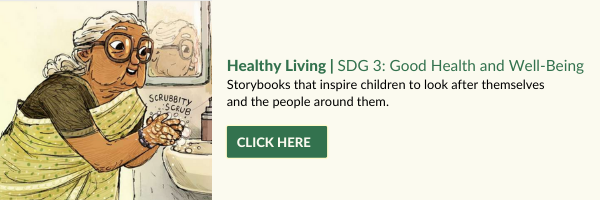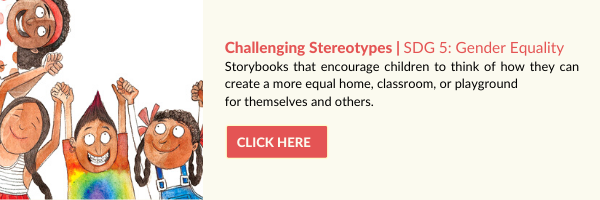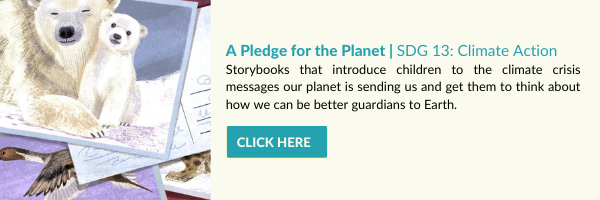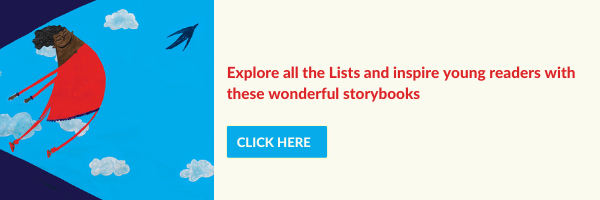Go the distance with these fun measurement activities!
Posted by Remya Padmadas on March 02, 2016If you thought your friend's house on the other side of town was far away, you have clearly not read this book. Climb the Magic Math Ladder to get from where you are to the top of Mount Everest, to Kashmir, to the moon, the Sun, and ultimately, to the edge of the Universe, which is very, very, VERY far away indeed. Ready, steady, go!
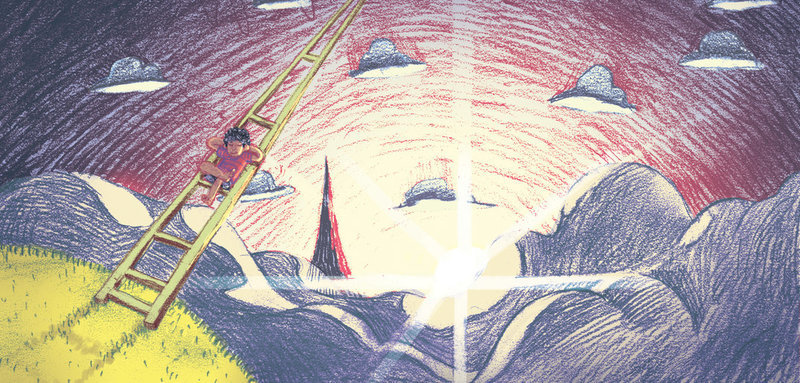
ACTIVITIES
Use Your Body
Resources
-
A Metre scale or strips of newspaper cut and taped together into meter long strips
What to do
-
Find something long to measure. It could be a boundary wall, the length of garden pathway - anything you like!
-
First ask the children to lie down head to toe, one after the other along the length of the item and find out how many ‘children’ it takes to measure the wall.
-
Next, ask them to measure the same distance with their metre long strips of newspaper.
-
What’s the difference in the measurement? Talk about how it’s important to have a standardised unit of measurement!
Globe Guesstimate!
Resources
-
Globe
-
Google
Ask the children to pick any two places on the globe and guesstimate how far apart they are. Then use Google to find the correct answer.
The closest guestimates win a prize!
comment (1)We turn 5 today and we're renewing our commitment to quality education for all children with these very special Book Lists 📚⭐
Posted by Pallavi Kamath on September 08, 2020Today is a significant day: It is International Literacy Day, and 5 years since the launch of StoryWeaver. The pandemic has only deepened our resolve to help achieve United Nations’ Sustainable Development Goal 4: Quality Education, by giving children around the world access to high-quality multilingual reading materials, and strengthening the publishing ecosystem to enable this.
September is also the 5th anniversary of the Sustainable Development Goals (SDGs). We are delighted to mark this shared milestone with a specially curated set of Book Lists, featuring storybooks that highlight concepts, values and principles related to the SDGs.
We hope that these Lists will be a useful resource for educators and look forward to them sparking meaningful conversations about subjects like equality, peace and climate action – and inspiring the next generation of readers and learners.
Thank you to all the wonderful people who make the StoryWeaver community such a rich and vibrant one: our young readers, committed educators, brilliant creators, talented translators, farsighted publisher partners, and encouraging donors. StoryWeaver now offers more than 24,000 open source storybooks in over 260 languages.
With your support we can make Literacy and Quality Education a reality for all children.
Illustrations credits:
Shrujana Shridhar for बेटियाँ भी चाहें आज़ादी written by Kamla Bhasin, published by Pratham Books | Priya Kuriyan for सतरंगी लड़कियाँ written by Kamla Bhasin, published by Pratham Books | Archana Sreenivasan for P.S. What's up with the
सादर करत आहोत, एक धमाल यू ट्यूब चॅनेल, स्टोरीविव्हर मराठी!
Posted by Pallavi Kamath on May 01, 2020Launching StoryWeaver Marathi: An exciting new YouTube channel!
महाराष्ट्र्र दिनाचे निमित्त साधून, मराठीत गोष्टी वाचण्याचा आनंद स्टोरीविव्हरला तुमच्यापर्यंत पोचवायचा आहे. त्याचसाठी आहे हे नवीन यू ट्यूब चॅनेल, 'स्टोरीविव्हर मराठी'!
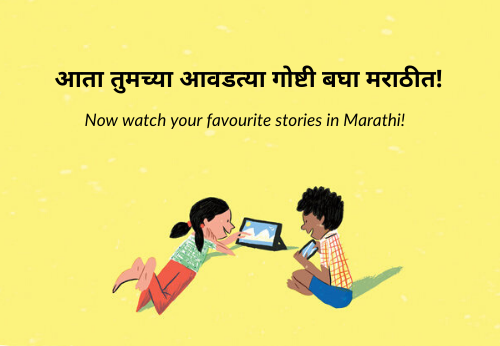
Illustration by Hitesh Sonar, for Black Hats White Hats written by Siddharth Mehta, published by Pratham Books
'रीडअलॉंग' म्हणजे सहवाचन हा उपक्रम मराठीत यशस्वीपणे राबवल्यानंतर आता यू ट्यूबवर घेऊन येत आहोत व्हिडीओ, म्हणजे दृक-श्राव्य गोष्टी.
व्यावसायिक कलाकारांनी सहज शैलीत या गोष्टीचं रंगतदार वाचन केलं आहे. त्याला मजेदार संगीताची जोडही दिलेली आहे त्यामुळे गोष्टी जिवंत होतात. शब्दाचा उच्चार झाला की तो लिखित शब्द उजळतो आणि त्या उच्चाराचं बोट धरून मुलांना तो शब्द निवेदकाबरोबर वाचणं, सोपं जातं. लिखित शब्द आणि त्याचा उच्चार असं एकत्रितपणे समोर आल्यानं मुलांना वाचनाची गोडी लागायला मदत होते.
अगदी लहान गटातल्या वाचकांना डोळ्यासमोर ठेवल्यानं, वाचन पातळी १ आणि २ अशाच गोष्टी यात आहेत. शिवाय व्हिडिओचा कालावधी ५ मिनिटांपेक्षा कमी ठेवल्यानं मुलांचं लक्ष चांगलं लागतं. पुन्हा पुन्हा येणारे विशिष्ट शब्द आणि आवाज, आकर्षक चित्रं, नाट्यमयता यांची मुलांना मजा वाटते. हे लक्षात ठेवून मोठ्यानं वाचायला मजा येईल अशा गोष्टीं निवडल्या आहेत. शिवाय 'स्टोरीविव्हर'वरील 'रीडअलॉंग'ची वैशिष्ट्ये जशीच्या तशी राखली आहेत.
यू ट्यूब वर 'स्टोरीविव्हर मराठी' याठिकाणी जाण्यासाठी इथे क्लिक करा.
दर आठवड्याला नवीन व्हिडीओ बघण्यासाठी सबस्क्राईब करा.
मजेत बघा!
Leave your thoughts in the comments section below! You can also reach out to us through our social media channels: Facebook, Twitter and Instagram.
Be the first to comment.